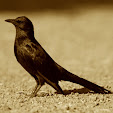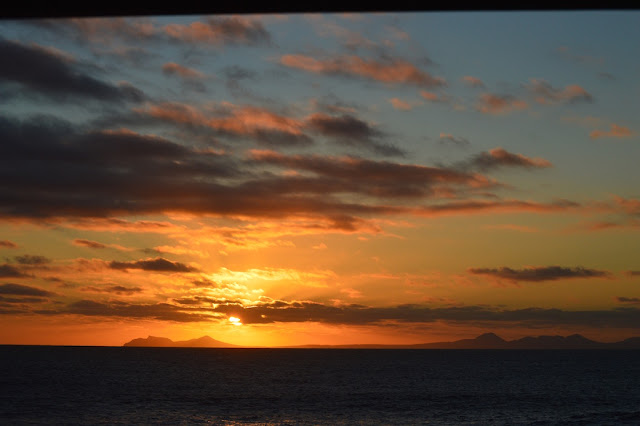 |
| Dawn at Stuurmansfontein |
On our return journey from the lovely, newly discovered Mokala National Park near Kimberley, my mother, her friend and I decided to take the long way home, and head towards the west coast (rather than via Beaufort West) into the vastness of the Upper Karoo where the roads are straight as arrows and there's little to break the horizon. This meant we had to backtrack to Britstown before taking a right into the greatest of open spaces South Africa has to offer.
From Britstown to Vosburg was a good 65km, and although the little town is off the main road, we turned off to take a look. The sign at the entrance invites visitors to come and enjoy the shade trees, and they are indeed impressive: large beefwoods line little gravel roads with typical Karoo homesteads, a fraction lost in time.
Here we found Die Ketel, a tuisbedryf (home industry shop), staffed in rotation by the women who make the goodies, such as rusks and cakes and jam. After a quick spin around the town, we were back on the road, tackling the 80km to Carnarvon (it's tar although the map shows gravel).
Carnarvon is newly famous because it's close to where the SKA, the world's largest radio telescope, is being built. But we did not linger as our destination for the night was a place called Stuurmansfontein where we planned to sleep in an historic corbelled house built out of stone by trekboere (pioneer farmers).
 |
| Stuurmansfontein with kookskerm |
About 25km out of Carnarvon, we turned onto a gravel road that would take us yet another 25km, past a martial eagle hanging in the sky and a dam surprisingly full of flamingos, to a farm house lush with garden roses. We were met by Charmaine Botha, her hands red from pickling beetroot, who told us the dam had recently been repaired and the flamingos had only arrived a fortnight earlier, before directing us a further 5km down a two-spoor track to the old house.
 |
| Karoo dam with flamingos |
 |
| Dawn view of corbelled house at Stuurmansfontein |
 |
| Looking up into the dome of the corbelled house |
The next morning, I took myself for a walk up the kloof behind the house, where a stream comes down in a trickle. As I walked deeper into the kloof, I heard the piercing jackal-like wail of a buzzard, warning me off. It was a pair of jackal buzzards, and I'm presuming they had a nest, so I backtracked without wishing to disturb them further.
 |
| Look carefully to see the jackal buzzards guarding their kloof |
 |
| Dawn sky, Stuurmansfontein |
On the way back on the main road, we encountered a group of shepherds herding sheep.
 |
| Shepherds and sheep |
And then on and on we drove past more corbelled houses, 132km to Williston where we'd promised ourselves coffee at the Williston Mall before pushing on. It's not really a mall at all but a place that houses an eclectic mishmash of things to buy and eat, and where I discovered the delicious Karoo Swiss Langbaken cheese (and have since found an outlet or two in Cape Town) made from a herd of only 12 jersey cows.
 |
| Sign painting at the Williston Mall |
From here, 115km to Calvinia past the jagged edges of the Hantam mountains to Nieuwoudtville which lies on the edge of an escarpment catching the last of the winter rain. We spent the night on a farm called Papkuilsfontein, about 25km out of town, where we slept in another historic cottage and I took a walk to the nearby swimming dam which offered up a lovely sunset view. From here on in we only had the downhill home run to go.
Travel tip? Don't rush...
 |
| Swimming pool at Papkuilsfontein near Nieuwoudtville |











































